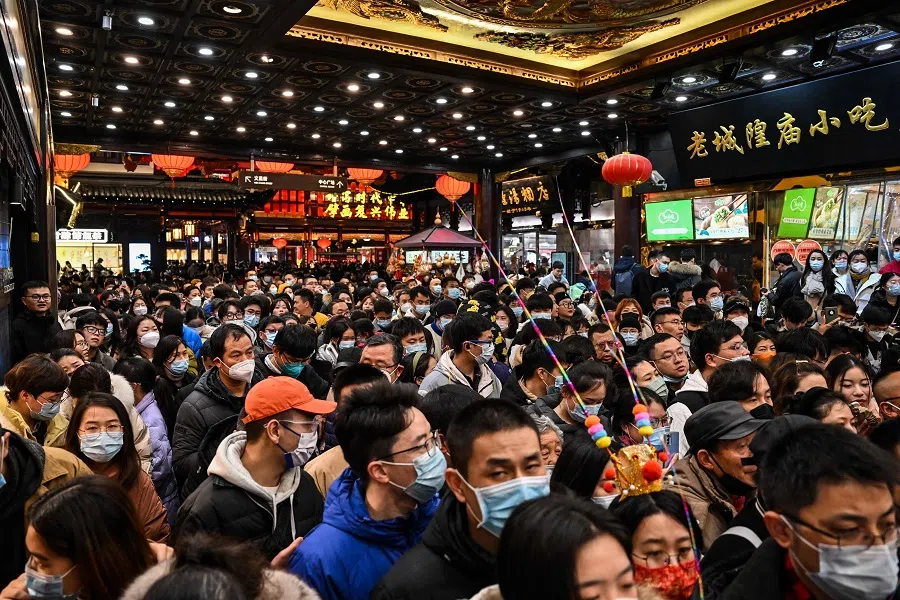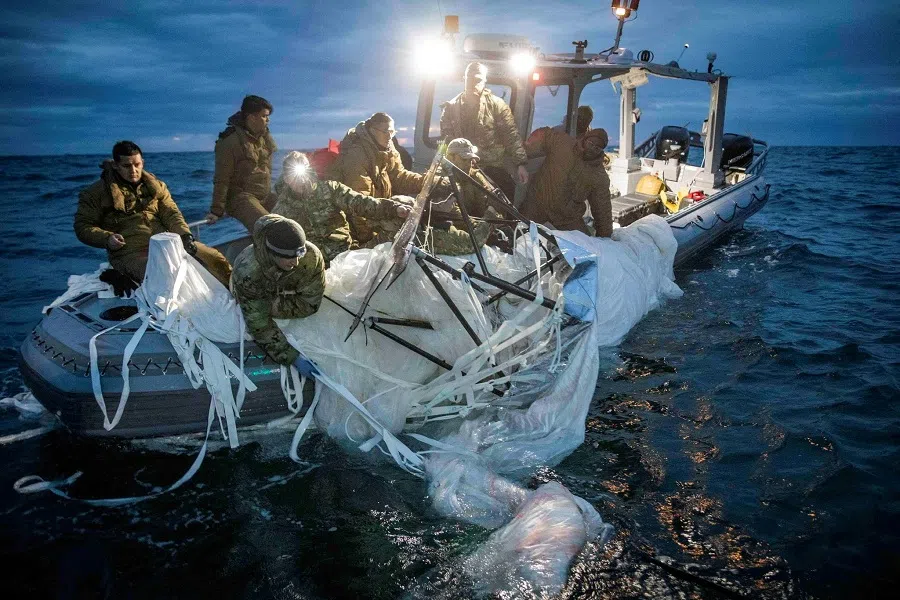External challenges could hinder China's economic recovery
After three years of Covid-19 disruption, China's economy and society are starting to get back on track. However, it is facing stiff external pressure, as shown by the further China-US fallout from the recent "balloon incident". Zaobao correspondent Yu Zeyuan looks at the challenges China's economic recovery faces from the outside world.

The Chinese economy is showing clear signs of recovery this year as it emerges from the shadow of the Covid-19 pandemic, with various local governments prioritising economic growth. Observers expect the Chinese economy to rebound significantly this year, casting away the gloom of the three-year-long pandemic.
However, the recent balloon saga, which intensified China-US tensions, has not only cast a shadow on the already fragile China-US relations but also worsened China's external environment. If not handled properly, China's road to economic recovery could be significantly disrupted by external challenges.
Nationwide economic recovery
China saw a rapid consumption recovery during the Spring Festival holiday. Data from Merit Interactive Co. shows that since January, the offline consumption index of 232 representative shopping areas nationwide has stayed at a high level of above 100 for several days, 15.5 points higher on average than in December last year. This highlights that offline consumption is quickly recovering.
The economic growth target for this year, which would be proposed in the government work report, is expected to be around 5.5%.

At the same time, 29 of China's 31 provinces, autonomous regions and municipalities have set an economic growth target of about 5% or higher. Various regions also emphasised the need to expand investments and accelerate the construction of major projects, and have set a fixed asset investment growth target ranging between 6% and 12%, higher than the local economic growth target.
The annual Two Sessions - meetings of the National People's Congress (NPC) and the Chinese People's Political Consultative Conference (CPPCC) - will commence next month. Coinciding with the five-yearly change of government, the State Council, NPC and CPPCC will also produce new leadership teams. The second- to fourth-ranking members of the Politburo Standing Committee, Li Qiang, Zhao Leji and Wang Huning respectively, will assume the respective roles of Chinese premier, NPC chair and CPPCC chair. This would then complete the reshuffling of top personnel that started during the Chinese Communist Party's 20th Party Congress in October last year.
... external factors have become the biggest challenge to achieving this year's economic growth target.
Since reform and opening up, China's strong economic growth has been the main driver of the country's rapid development. As the pandemic subsides and the economy recovers, the incoming Chinese leadership team will shape a new image of competence by driving economic growth and promoting development. The economic growth target for this year, which would be proposed in the government work report, is expected to be around 5.5%.

While China still faces internal issues such as a lack of market confidence and institutional obstacles to development, external factors have become the biggest challenge to achieving this year's economic growth target.
A developing 'balloon incident'
Since February, American public opinion has been focused on the Chinese "spy balloon" saga, which led to the postponement of US Secretary of State Antony Blinken's China visit. Another war of words was ignited, with China asserting that the balloon was a civilian airship used for meteorological research purposes that had accidentally entered US airspace due to force majeure, but the US insisting that the balloon was for intelligence surveillance.
On 4 February, the US military deployed a F-22 fighter jet to shoot down the balloon. The Chinese defence ministry refused to communicate with the US defence ministry and asserted that China reserves the right to use the necessary means to address similar situations, dealing yet another massive blow to China-US relations.
A few days later on 9 February, with a vote of 419 to zero, the US House of Representatives unanimously passed a resolution condemning China's attempt to "deceive the international community" through a civilian airship, urging the Biden administration to act quickly and decisively to prevent foreign aerial surveillance platforms from trying to gather intelligence in US airspace.

The "balloon incident" did not end there. On 10 February, the White House said US fighter jets shot down an unidentified flying object over Alaska. The next day, Canadian Prime Minister Justin Trudeau tweeted: "I ordered the take down of an unidentified object that violated Canadian airspace... Canadian and U.S. aircraft were scrambled, and a U.S. F-22 successfully fired at the object."
While the US and Canada did not specify which country the unidentified object belonged to, nor did China claim ownership, amid the heat of the Chinese "surveillance balloon", the West would inevitably attribute these two unidentified objects to China, and continue to play up the China "balloon threat".
The balloon incident might have given the US an opportunity to fly into a rampage against China...

Also on 10 February, the US Department of Commerce added six Chinese entities to its export blacklist, claiming that these entities supported Chinese military programmes related to airships and balloons used for intelligence and reconnaissance. Academics noted that these sanctions were a response to China's balloons floating into US airspace, and an opportunity to expand the scope of the tech war with China, as well as a warning to companies from other countries to keep their distance from Chinese companies.
Some Chinese academics also believe that the US has long set a strategy of containing China, but did not have the justification to go all out against it. The balloon incident might have given the US an opportunity to fly into a rampage against China; it might strain or even completely break China-US relations. Indeed, China needs to make appropriate adjustments to its strategy and prepare to face US containment.
For now, it does seem that the US intends to magnify the balloon incident and work with its allies to clamp down on China's tech and trade connections with other countries, and promote the gradual decoupling with China for itself and its allies. This is clearly detrimental for China in its economic efforts. Furthermore, with key US politicians set to visit Taiwan at any time and increasing arms sales from the US to Taiwan, the risk of a fallout is there.
...while the almost year-long war in Ukraine has partly drained US energies in pressuring China, it has also united the voice of the Western world on China.

Also, while the almost year-long war in Ukraine has partly drained US energies in pressuring China, it has also united the voice of the Western world on China. Reducing the possible impact of the Russia-Ukraine war on China's relations with Western countries is also a tough issue that China cannot ignore for some time to come.
After three years of Covid-19 disruption, China's economy and society are starting to get back on track, only to immediately face stiff external pressure. Whether China can appropriately handle external challenges and maintain the current situation of "competing without breaking", so that its economic efforts this year are not laid to waste, will be a test of the wisdom and capability of China's new leadership.
This article was first published in Lianhe Zaobao as "中国拼经济的外部挑战".
Related: Politics a threat to China's economy | Chinese netizens debate: Should China abandon the market economy for a 'people-oriented' economy? | Dual circulation strategy revisited: China deepens integration with the global economy | The balloon is down: Whither US-China relations now? | Turbulence caused by Chinese balloon set to last

![[Big read] Paying for pleasure: Chinese women indulge in handsome male hosts](https://cassette.sphdigital.com.sg/image/thinkchina/c2cf352c4d2ed7e9531e3525a2bd965a52dc4e85ccc026bc16515baab02389ab)



![[Big read] How UOB’s Wee Ee Cheong masters the long game](https://cassette.sphdigital.com.sg/image/thinkchina/1da0b19a41e4358790304b9f3e83f9596de84096a490ca05b36f58134ae9e8f1)